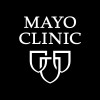
Reverse Total Shoulder Arthroplasty Versus Open Reduction Internal Fixation of 3&4 Part Proximal...
Closed Fracture Proximal HumerusFour PartWill patients who suffer complex humerus fractures have better functional outcomes and less implant failure with shoulder replacement (reverse total shoulder arthroplasty, RTSA) compared to shoulder repair (open reduction and internal fixation, ORIF)?

Treatment of Type I Supracondylar Fractures of the Humerus
Type I Supracondylar Fracture of the HumerusType I supracondylar fractures are elbow fractures that occur in children aged 3-10 years. Many different treatment options exist to treat this type of fracture. The purpose of this study is to compare three different treatment modalities with regards to pain experienced during treatment, the amount of pain medication needed during treatment, and any short-term complications. We hypothesize that above elbow casting and long-arm splinting will result in less pain and have fewer complications than taping the elbow in flexion.

Proximal Humerus Fractures Randomized Control Trial
Proximal Humerus FractureThe primary objective is to determine if a difference exists in functional outcomes, as measured by the Constant score, when comparing nonoperative management and locking plate surgical fixation of low-energy displaced proximal humerus fractures in the elderly population over a 2-year follow-up period. Secondary outcomes will include an assessment of the ASES score, the SF-36 quality of life score, complication rates, re-operation rates, radiographic time to union, radiographic malunion, hardware position and evidence of avascular necrosis or posttraumatic osteoarthritis .

3D Geplante Osteosynthesen Mit Patientenspezifischen Zielvorrichtungen
Fracture of HumerusFracture of Ulna Radius6 moreGoal of this study is to evaluate the accuracy of 3D computer-planned fracture fixation with patient-specific instruments for clavicle, upper extremity, lower extremity and pelvis fractures compared with the standard procedure of fracture fixation.

RSA vs. Nonop for 3 & 4-Part Proximal Humerus Fractures
Humerus FractureHumerus5 moreThere is currently no consensus amongst orthopedic specialists on the best way to treat 3- and 4-part proximal humerus fractures. No surgery and surgery with a type of shoulder replacement called a reverse total shoulder arthroplasty are two options that many orthopedists use. This study is being performed to evaluate the differences in short- and long-term pain and functional outcomes between patients who are treated with these two different options.

Clinical and Radiological Results of Conservative Treatments in Proximal Humerus Fractures.
Proximal Humeral FractureIn the investigators' prospective randomized study, the investigator will investigate the effect of different bandage types on functional and radiological results of proximal humerus fractures over 18 years of age, for whom conservative treatment is decided. In recent studies, it has been shown that surgical treatment in proximal humerus fractures has a high complication rate and is also not superior to conservative treatments in terms of functional results. Therefore, the importance of conservative treatment is increasing day by day in this group of fractures, especially in elderly patients with high risk for surgery. In these studies in the literature, the method in conservative treatment is not clearly specified, and the investigator will apply 3 different bandages to adjust the rotation of the shoulder in 3 different ways during the investigators' conservative treatment. The investigator will compare functional and radiological results between these groups.

Evaluation of Efficacy and Safety of Autologous MSCs Combined to Biomaterials to Enhance Bone Healing...
Delayed Union After Fracture of HumerusTibial or FemurBone grafting is widely used in hospitals to repair injured, aged or diseased skeletal tissue. In Europe, about one million patients encounter a surgical bone reconstruction annually and the numbers are increasing due to our ageing population. Bone grafting intends to facilitate bone healing through osteogenesis (i.e. bone generation) at the site of damage, but this is only attained presently by including cells capable of forming bone into the augmentation. Bone autograft is the safest and most effective grafting procedure, since it contains patient's own bone growing cells (to enhance osteogenesis) and proteins (to enhance osteoinduction), and it providing a scaffold for the new bone to grow into (osteoconduction). However, bone autograft is limited in quantity (about 20 cc) and its harvesting (e.g. from the iliac crest) represents an additional surgical intervention, with frequent consequent pain and complications. We hypothesize that using autologous bone marrow cells expanded in GMP facility surgically implanted with synthetic bone substitutes contribute to the resolution of the health and socioeconomic complications of delayed union or non-union after diaphyseal and metaphyseal-diaphyseal fractures with safety and efficacy.

PHILOS Augmented - a Multicenter Randomized Controlled Trial
Humerus FracturesClosed Fracture of the Proximal HumerusThe primary objective is to compare the mechanical failure risks in the first year after treatment.

Cell Therapy by Bone Marrow-derived Mononuclear Cells (BMC) for Large Bone Defect Repair: Phase-I...
Humerus Fracture Displaced ProximalIn the present phase-I clinical trial we investigate safety and feasibility of an augmentation with preoperatively isolated autologous BMC cells seeded onto ß-TCP in combination with an angle stable fixation (Philos plate®) for the therapy of proximal humeral fractures.

Paravertebral Block for Proximal Humeral Fracture Surgery
Proximal Humeral FractureThis study evaluates the effects of T2 paravertebral block block improving interscalene brachial plexus block and superficial cervical plexus block on the relief of pain intensity during elderly proximal humerus fracture fixation surgery. The brachial plexus and cervical plexus block(IC block) will be performed in half of participants, while the T2 paravertebral block combined with IC block will be performed in the other half.
